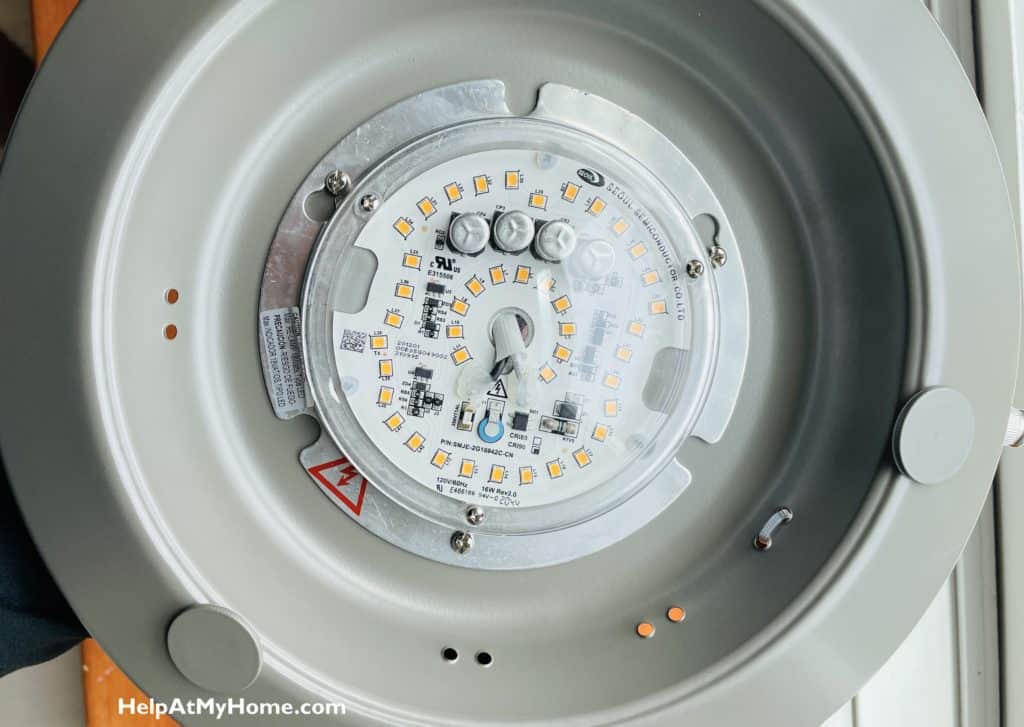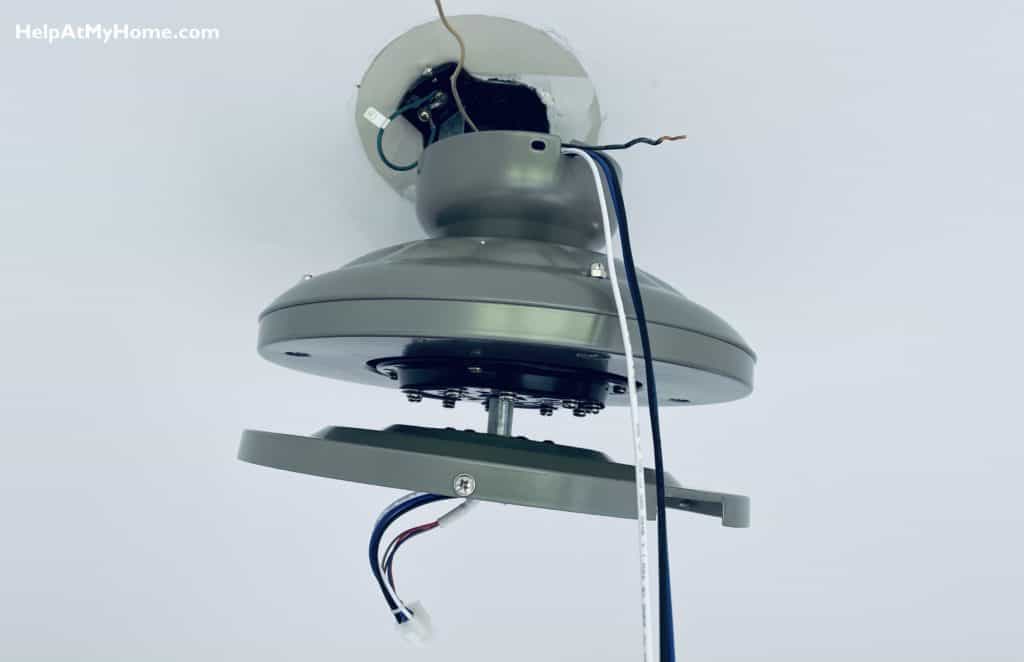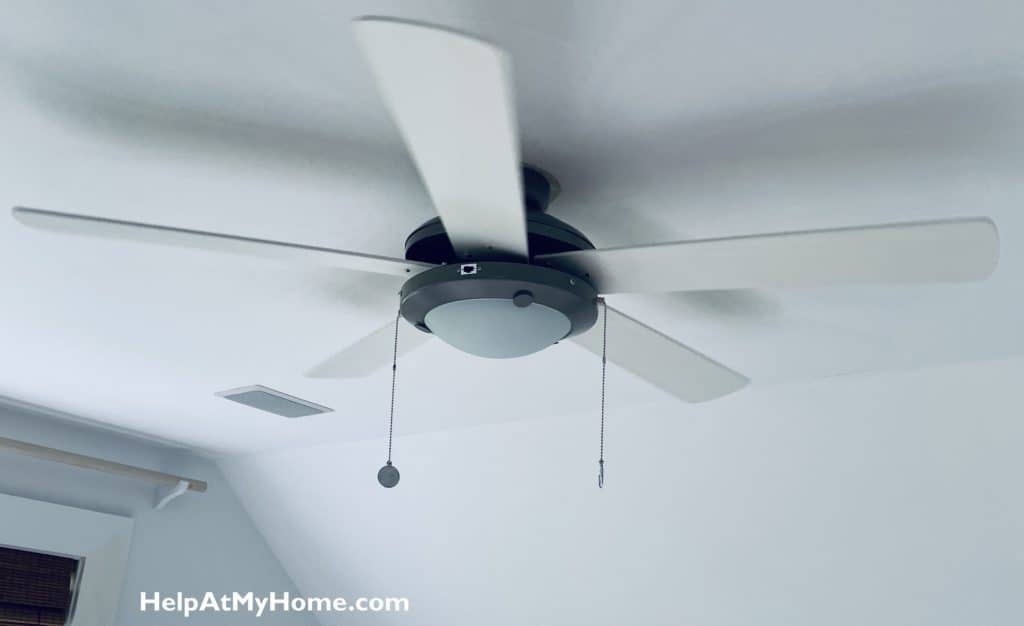With summer approaching I had a number of bedrooms in need of new ceiling fans. In search of a reliable, affordable fan, I did my research purchased a Westinghouse Comet 52-inch, 5-blade ceiling fan as the first ceiling fan in my summer cooling experiment.
Having installed the fan myself and used it for some time now, here is my Comet fan review.
Why I Bought A Westinghouse Comet
Buying a ceiling fan is a very confusing experience. Fans range from about $80 to $1500, and there is a huge range of styles and materials used. Despite the fact that everyone wants the same few things from their ceiling fan — stable, reliable, quiet, lots of airflow — fans come in a tremendous assortment of styles, colors, designs, prices, sizes, and materials. The huge selection made the buying process very daunting for me.
If you need help with all this, review our article on how to buy a ceiling fan. It should help!
Ultimately this fan was recommended to me, it was in the right price range, I know and trust the Westinghouse brand, and I liked the fans feature set. Also, I wanted to install it on a given weekend and the fan is sold through Amazon, so I knew it would be there on time with free shipping. I had recently bought another, more expensive fan from Fanimation, and the shipping was slow and expensive. I had to wait for weeks for it!
Strengths Of The Comet Fan
On the upside…
- The fan sells for about $99, which is a great price
- It has an LED light built-in, which is an expensive upgrade on many fans
- LED is dimmable
- Easy installation
- Can be installed on a downrod or flush-mount
Weaknesses Of The Comet Fan
On the downside…
- The Comet doesn’t include a remote
- The LED model is indoor only, so can’t be used on porch or in a bathroom
- Could be quieter
How The Comet Looks
While I think the aesthetics of the Westinghouse Comet fan are fine, it’s not particularly a cool looking fan. It’s a bit old-fashioned looking and perhaps a bit staid but, for me, it’s OK looking at best.
The Comet I bought has a bronze motor body and blades that are reversible so the can be white or light brown wood pattern depending on if you install them facing up or down. The motor piece is also sold in black and white, so all the main options are available. Finally there is a black faux wood fan blade color as well, but it’s only sold with the black motor body.

The Comet’s Light
My Comet fan was sold with an included LED light, which is hidden behind a glass shroud, so it looks like a normal light. It’s bright and can be turn on and off independently of the fan.
It’s a 16 watt LED array that cannot be replaced to upgraded without removing the whole light unit. If you are familiar with LED bulbs, the following specs will make it clear that the lighting setup is the equivalent of a single, OK quality bulb.
The light is 3000K, so not quite “warm” but a bit bluer than that. It’s 1600 lumens, or about the equivalent of a single 100W incandescent bulb. It should last for 25,000 hours, or 23 years or normal usage. The CRI of 80 means light quality if mediocre, so items in your room won’t look their best, but it’s fine for a bedroom.

Comet Sizing
This is a 52-inch diameter fan, but that’s only part of the story. The number one most asked for measurement with any fan is its overall height, or how far from the ceiling it hangs. If you bought a standard Comet with a 4″ downrod, this is 14.3″.
The good news is that you can convert the Comet into a flush-mount or “hugger” by not installing the downrod. This will save 3″ inches, putting the total height at 11.3″. By doing this you’ll lose some air moving efficiency and you won’t get the best airflow possible from the fan, but it’ll be a better fit for rooms with low ceilings (around 8 feet).

Fan Installation
I installed the 52-inch Comet in a bedroom with a low-ish ceiling exactly following all the directions that Westinghouse included. I have to say this is one of the easiest fan installations I’ve ever done.
The fan isn’t very heavy, at about 18 pounds, and the instructions are extremely clear, so the installation went quite smoothly. No special tools were required, just a standard array of screwdrivers, pliers, wire strippers, electrical tape, and so forth.
I did the flush mount installation, which didn’t add any complexity to the job thanks to the clean instructions. This method turns the metal surround at the top of the fan into a structural piece instead of a ornamental one, but this didn’t case any problems.
Ultimately the installation was smooth and easy and the end result was a stable install that works perfectly.

Comet Fan Review
After a number of weeks of using the Comet, I have mostly positive thoughts about it.
The fan works very well. It spins smoothly and moves a lot of air. The LED is bright and lights the room nicely. The light is a little bluer (cooler) than I’d typically use inside because I have my whole house outfitted with 2700K bulbs, but this only a minor annoyance.
The Comet isn’t a particularly quiet fan. It’s perfectly acceptable, but my other fans (mostly from Fanimation) are a good deal quieter. This fan’s volume level is on par with similarly priced models I’ve used from Hunter and Harbor Breeze.
The lack of a wireless remote is definitely a cost-cutting measure that bothers me with the Comet. You can uninstall the fan and install a ceiling remote kit, which only costs about $25, but that’s not something I want to do with a perfectly functional fan.
The Comet is controlled with two hanging cords — one for the fan speed and another for the light. This turns out to be great for kids, since they can’t lose/break the remote and they can only turn the whole unit on and off using your light switch. I’d recommend just getting the remote kit from the start if you buy a Comet. It adds about 20 minutes to the installation, but it’s worth it in the long run.
Ultimately this is a good fan at a very good price. It doesn’t have the polish or quietness of higher end fans, but it offers superb value, solid performance, and reliable operation.

